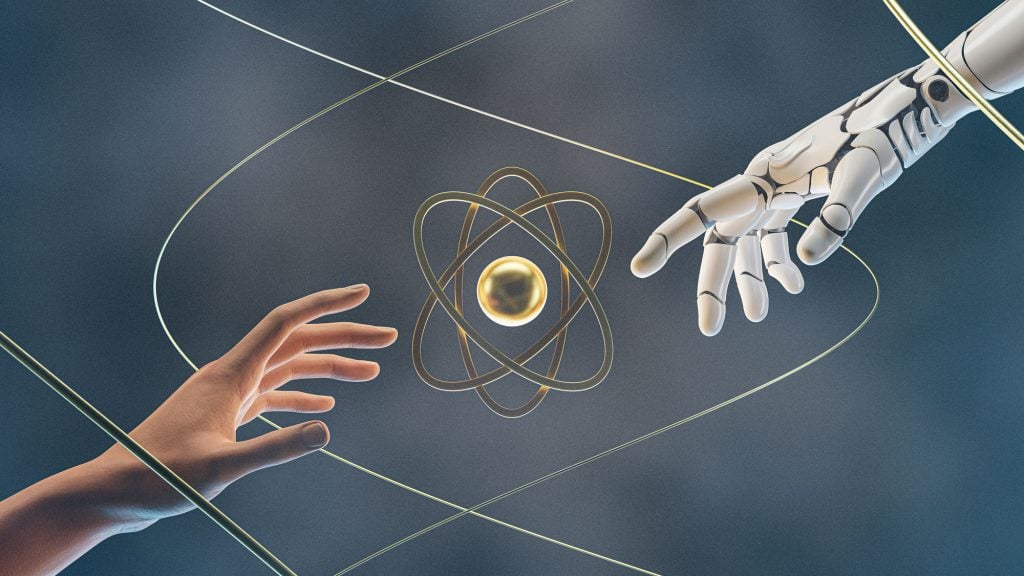AI makers—whether developing foundational models, AI agents, or AI-enhancing wrappers—are at the forefront of today’s technological revolution. Protecting their intellectual property (IP) isn’t just a legal formality; it’s a strategic necessity for maintaining a competitive edge and securing long-term profitability. As AI continues to reshape industries, the question of IP ownership becomes more complex, with challenges ranging from patent eligibility to navigating copyright issues in AI-generated content. This article explores why robust IP protection is critical for AI makers, the legal hurdles they face, and the best strategies for safeguarding their innovations in an evolving regulatory landscape.
Key Takeaways
- Intellectual property is vital for AI companies, representing up to 90% of their value, necessitating strong policies to protect innovations and attract investors.
- AI-generated content raises complex copyright challenges, emphasizing the need for developers to understand varying legal frameworks and register works to safeguard their IP rights.
- Employment and licensing agreements are essential for protecting ownership of intellectual property and monetizing AI innovations, fostering both security and revenue for AI makers.
- Compliance with the Digital Millennium Copyright Act (DMCA) is crucial for managing copyright issues related to AI-generated content, ensuring proper handling of takedown requests and balancing the rights of copyright holders and users.
Understanding Intellectual Property
Definition of Intellectual Property
Intellectual property (IP) refers to the legal rights that protect creations of the mind, including inventions, software, literary and artistic works, symbols, names, images, and designs used in commerce. For AI makers, IP is more than just a legal safeguard—it is a foundational asset that protects the core innovations driving artificial intelligence. Whether developing novel machine learning models, or AI-enhanced software, securing strong IP rights is essential for preventing unauthorized use, maintaining a competitive edge, and maximizing commercial opportunities.
Among the various forms of IP, patents play a particularly crucial role. By securing patents, AI developers gain exclusive rights to their inventions, allowing them to control the use, sale, and licensing of their technologies. In an industry where advancements are rapidly evolving, understanding and leveraging IP protections is not just advisable—it’s a business imperative.
Types of Intellectual Property Relevant to AI Makers
- Patents: Patents protect novel inventions and technological innovations, including AI-driven algorithms, machine learning architectures, and neural network designs. A granted patent provides the inventor with exclusive rights to use, sell, and license the invention for a set period, preventing competitors from capitalizing on the same breakthrough.
- Trademarks: Trademarks safeguard brand identity by protecting names, logos, and slogans associated with AI-driven products or services. A strong trademark portfolio helps AI companies differentiate themselves in the marketplace and prevents consumer confusion caused by imitators.
- Copyrights: Copyright protection extends to original works of authorship, including software code, training datasets, and AI-generated content. While copyright law traditionally applies to human-created works, the evolving legal landscape raises important questions about ownership rights over AI-generated material.
- Trade Secrets: trade secrets protect confidential business information, such as proprietary algorithms, data sets, and AI model training methods. Unlike patents, trade secrets require no formal registration but must be actively safeguarded through strict confidentiality measures. Keeping key innovations as trade secrets can provide AI developers with a long-term competitive advantage by preventing competitors from accessing proprietary technology.
Consequences of Not Protecting Intellectual Property
Failing to secure intellectual property (IP) rights can have serious, long-term repercussions for AI makers, leaving their innovations vulnerable to exploitation and diminishing their competitive advantage. The risks include:
- Loss of Exclusive Rights: Without proper IP protection, competitors and third parties can freely use, reproduce, or distribute AI-generated content, and machine learning models. This lack of control weakens an AI maker’s ability to monetize their innovations and maintain technological leadership.
- Unfair Competition: In the absence of patents, trademarks, or trade secret protections, rival companies can replicate groundbreaking AI technology, capitalize on unprotected advancements, and erode the original creator’s market position. This not only stifles innovation but also makes it harder for AI developers to differentiate their offerings.
- Financial Losses: Unprotected IP creates an open door for infringement, leading to lost revenue streams from licensing deals, product sales, or potential acquisitions. AI makers who fail to secure patents may find themselves unable to enforce their rights against infringers, resulting in costly legal battles or an inability to commercialize their own technology effectively.
- Damage to Reputation: A failure to protect IP signals weak business practices, which can erode investor confidence, reduce customer trust, and harm partnerships. AI companies that neglect IP protections may struggle to attract funding, as investors often prioritize businesses with secure and enforceable assets.
In a rapidly evolving AI landscape, securing intellectual property is not just about legal protection—it’s about safeguarding innovation, ensuring business longevity, and maintaining a strategic market advantage.
Patent Strategy & Business Considerations
A comprehensive patent strategy is not just about filing individual patents for specific inventions; it’s about building a well-rounded approach to safeguard your technology and stay ahead of competitors. In the AI space, where the landscape changes rapidly and innovation is critical, having a long-term patent strategy can be a game-changer.
Patent Clustering: Patent clustering refers to the practice of filing multiple patents around a single technology or product, instead of just one. This is done to protect various aspects or components of a complex system. For example, if you’ve created an AI-driven product, instead of just patenting the main algorithm, you might file patents on the sensors, software, or other parts that make the system work. This prevents competitors from bypassing a single patent by working around one part of your technology while still using others. This strategy is useful for AI companies where systems often rely on the integration of multiple components.
Cross-Licensing: Cross-licensing is a legal agreement between two or more companies where they agree to share the patents they own. In other words, each party grants the other permission to use their patented technologies. For AI companies, this means they can use technologies they don’t have the resources to develop on their own, and in return, they share their own technology with others. This can fuel innovation because it allows companies to access complementary technologies and avoid costly development, while still protecting their own inventions. Cross-licensing can also lead to partnerships between companies, reducing the likelihood of patent disputes.
Patent Defense: Patent defense is about protecting the patents you hold from being infringed upon (used without permission). Once you have a patent, you need to be able to defend it from competitors who may try to copy or use your technology without permission. In the AI field, where innovations happen quickly, this is especially important because you’re at risk of competitors creating similar technologies. Having a strong patent portfolio (a collection of patents you hold) allows you to defend your technology more effectively. It can also act as a deterrent, signaling to competitors that you’re prepared to protect your intellectual property. If someone else does infringe on your patents, you may be able to negotiate or sue for damages.
The Patent Process: A Roadmap to Protecting AI Innovations
Securing a patent for AI technology is a nuanced and multi-step process that requires careful attention to detail. Understanding the stages and their significance helps companies navigate the challenges of patenting new AI innovations effectively.
Patent Search and Prior Art: Before filing a patent, a patent search is an essential first step. This involves searching existing patents to see if your technology has already been patented by someone else. In the world of AI, where technological advancements move quickly, knowing what has already been done (known as prior art) is crucial. A thorough patent search helps you avoid filing for a technology that’s already been patented, and it also helps you identify new opportunities for innovation. By exploring similar patents, you might discover gaps in the market where your technology can make an impact.
Patent Application Filing: Once you’ve established that your technology is new, you file a patent application. This application needs to describe your invention in detail, explaining how it works and how it differs from existing technologies. In the case of AI, where many inventions revolve around algorithms, software, and data processes, it’s important to be specific about how these elements work together.
The application must explain both the technology’s functionality and its potential applications. If the claims (what you’re asking the patent office to protect) are too broad, competitors might find ways to design around them; if they’re too narrow, the patent might not provide enough protection. It’s vital to find a balance that protects your invention while meeting the patent office’s standards.
Office Actions and Examination: After filing your patent application, the patent office (the governing body that reviews patent applications) will examine it to ensure it meets the requirements for patentability, such as novelty (it’s new) and non-obviousness (it’s not just a minor tweak of an existing idea). During the examination process, you may receive office actions, which are requests from the examiner for more information or clarification. The examiner might challenge parts of your patent application, particularly if the technology involves abstract concepts like algorithms. Responding promptly and thoroughly to these requests is critical to ensure your patent moves forward successfully.
Patent Grant and Enforcement: If your patent application is successful, you’ll be granted a patent. This gives you exclusive rights to your invention for a set period (usually 20 years), meaning others can’t make, use, or sell your invention without permission. But enforcement is up to you. If someone infringes on your patent, you need to act to protect your rights. This might involve sending a cease-and-desist letter to the infringer, or in some cases, you might need to file a lawsuit. In the fast-paced AI industry, where technology evolves rapidly, it’s important to keep an eye out for potential infringements by competitors.
Patentability of AI Agents
Are AI Agents Patentable?
The question of whether AI agents are patentable remains a topic of ongoing debate in both legal and technological circles. AI agents, which are autonomous systems designed to perform tasks without human intervention, present unique challenges in terms of patent eligibility. The primary issue revolves around determining whether these AI creations meet the criteria for patentability, particularly the requirement of having a human inventor.
To address the patentability of AI agents, AI makers should consider the following:
- Human Inventor Requirement: Current patent laws necessitate that an invention must be attributed to a natural person. As AI agents are developed through complex algorithms and machine learning models, identifying a human inventor can be challenging. AI makers must ensure that there is a clear human contribution to the creation process to satisfy this requirement.
- Novelty and Non-Obviousness: Like any other invention, AI agents must be novel and non-obvious to qualify for a patent. This means that the AI agent must offer a new and inventive solution that is not obvious to someone skilled in the field. AI makers should thoroughly document the development process to demonstrate the uniqueness and innovation of their AI agents.
- Technical Contribution: AI agents must provide a technical contribution to be patentable. This involves demonstrating that the AI agent offers a practical and technical solution to a problem, rather than simply being an abstract idea or a mere automation of a human task. AI makers should focus on showcasing the technical advancements and benefits of their AI agents.
- Legal Precedents and Jurisdictions: Patent laws vary across jurisdictions, and the treatment of AI-generated inventions differs worldwide. Some patent offices, such as the USPTO and EPO, have reinforced the necessity of human inventorship, rejecting patents that list AI systems as sole inventors. However, other jurisdictions are beginning to explore potential reforms to accommodate AI-driven innovation. AI makers should stay informed on evolving legal standards and consider filing in jurisdictions with favorable approaches to AI-related patents.
Patents vs. Copyrights: What AI Makers Need to Know
As AI technology continues to evolve, there is an ongoing debate about the eligibility of AI-created works for patent and copyright protections. Intellectual property (IP) laws are designed to grant creators exclusive rights to prevent others from exploiting or copying their innovations. However, the criteria for obtaining patents and copyrights differ significantly, and understanding these distinctions is crucial for AI makers looking to protect their creations.
- Patents: To obtain a valid patent, current laws require that the invention be attributed to a human inventor. This means that only inventions created by natural persons can be patented—AI itself cannot be recognized as an inventor. For AI makers, this highlights the importance of ensuring that human involvement is clearly demonstrated in the invention process. AI tools can certainly assist in the development, but human input is necessary to meet the legal requirement for patentability.
- Copyrights: Copyright law differs in that it does not require the identification of a specific human author to be eligible for protection. However, it traditionally assumes that the author is a living person. For AI-created works, the key consideration is whether a human participated in the creation process, even if the work was generated with the assistance of AI tools. As a result, while AI-generated content can be protected under copyright law, the role of the human creator is still crucial in establishing ownership.
One well-known example of AI-related IP protection is Airbnb’s patented algorithm, which uses machine learning techniques to improve predictions about booking likelihoods. This patented technology has significantly enhanced the accuracy of their reservation prediction systems and highlights how legal protections can secure innovative AI applications, offering businesses a competitive advantage in the marketplace.
For AI makers, understanding the nuances between patents and copyrights is essential to securing intellectual property rights and leveraging them for long-term success. By recognizing the specific requirements of each, AI innovators can better navigate the legal landscape and protect their groundbreaking work.
Navigating Copyright Law in AI Development
Content generated by AI presents unique challenges when it comes to copyright law. Businesses must ensure that they hold the proper rights to any AI-generated content to avoid infringing on others’ intellectual property. Given the complexity of AI, there is a risk that AI systems might unintentionally create content that closely resembles existing copyrighted works. This raises important questions about authorship and ownership of AI-generated materials. AI developers must stay well-versed in copyright regulations to protect their innovations from legal risks and to avoid unethical practices that could lead to significant legal and reputational damage.
In some instances, AI systems that process but do not retain copyable parts of existing works may be able to rely on the fair use doctrine, particularly during training phases. However, legal interpretations of AI-generated content vary by jurisdiction. For example, countries like China recognize intellectual property rights for works produced by AI, whereas regions like the European Union have developed specific laws regulating the use of existing works in AI training. These regulations give rightsholders the opportunity to challenge AI’s use of their content, making it crucial for businesses to understand the relevant laws in the regions where they operate.
In the United States, one way to safeguard against copyright infringement is by registering original works through the U.S. Copyright Office. This not only publicly establishes ownership but also strengthens your legal position in case of a dispute. However, under current U.S. copyright law, works created solely by AI—without any human involvement—cannot be registered for copyright protection. This was illustrated by the case of artist Jason Allen, whose AI-generated artwork was denied copyright registration because it lacked human creative input. This underscores the continuing importance of human involvement in the creation process for securing copyright protections.
The Role of Employment Agreements in Protecting IP
In the realm of AI development, securing intellectual property rights often hinges on well-structured employment agreements. These agreements play a crucial role in ensuring that any AI-driven inventions created by employees during their employment are automatically assigned to the company. This prevents disputes over ownership and solidifies the company’s claim to any patentable innovations.
By including clear assignment of invention clauses, companies can safeguard the intellectual property rights to cutting-edge AI technologies. Additionally, non-disclosure agreements (NDAs) within these contracts help protect confidential AI models, data, and algorithms from being leaked or misused by former employees, enhancing both patent protection and the firm’s competitive advantage.
For AI companies, proactively managing intellectual property through employment agreements is essential for preserving patent ownership and preventing costly legal battles.
Case Studies of Successful AI Patents
Artificial intelligence has been a driving force behind numerous groundbreaking innovations. Below are some examples of granted AI patents, showcasing the role of intellectual property in safeguarding these innovations and helping companies maintain their competitive edge.
Tesla’s AI Patents for Autonomous Driving
Tesla has secured several patents protecting technologies behind its Full Self-Driving (FSD) and Autopilot systems, such as:
- Sensor Fusion Technology: Combines data from cameras, radar, and ultrasonic sensors to create a comprehensive understanding of the vehicle’s surroundings, essential for safe autonomous navigation.
- Predictive Path Planning: Enables Tesla vehicles to anticipate the behavior of other road users, ensuring safer driving decisions.
- Enhanced Object Detection: A patent titled “Enhanced Object Detection for Autonomous Vehicles Based on Field View” improves the accuracy of identifying objects in images captured by Autopilot cameras (See the patent here).
- Detected Object Path Prediction: Improves the prediction of dynamic object paths, reducing reliance on expensive sensors like LiDAR (See the patent here).
These patents not only safeguard Tesla’s technological innovations but also ensure that the company maintains a competitive edge in the rapidly growing autonomous driving industry.
Google’s Patent on Search Generative Experience (SGE)
Google’s patent titled “Generative Summaries for Search Results” covers how large language models (LLMs) generate natural language summaries in response to user queries. This patent is pivotal in improving the accuracy and relevance of search results, demonstrating the impact of AI in enhancing user experiences through advanced algorithms (See the patent here).
Amazon’s Alexa Personalization Patent
Amazon has patented technologies that allow Alexa to personalize recommendations and advertisements based on user preferences. These innovations in voice recognition and personalization contribute to Alexa’s dominant position in the smart assistant market, highlighting the importance of securing intellectual property to maintain technological leadership.
Samsung’s Drone with Face and Gesture Recognition
Samsung holds patents for drones that can recognize faces and gestures, showcasing advancements in AI-powered image recognition and human-computer interaction. This technology highlights how AI is integrated into consumer devices, offering personalized and efficient interactions with smart devices.
These case studies underscore the critical role of intellectual property in protecting unique AI innovations, enabling companies to secure their position in competitive and rapidly evolving markets.
Speak With an Experienced Software Patent Attorney
Software patents, when you monetize software patents, are an invaluable asset that will bring your company short-and long-term monetization opportunities while keeping competitors away from your proprietary process. At RLG, our attorneys have the experience and expertise in preparing your software patent application including drafting a thorough disclosure document and outlining your software system’s processes of use and point of novelty. We will work closely with you to draft a comprehensive application and corresponding drawings for one transparent fixed fee to ensure your software patent will be issued and have sustainable legal protections in the future.
The RLG Guarantee
In addition to a fixed-fee billing approach, RLG offers a money-back guarantee on all prior art searches, provisional patent applications, design patent applications, and trademark applications. To be clear: should our team determine that your invention is not patentable in light of the prior art, a full refund will be provided. If patentable, we will credit the cost of your search towards your new application.
For the trademark and design patent applications, this means that if your application does not receive a notice of allowance for any reason, we will provide a full refund. Our trademark and design patent application packages include all search, preparation, office action, USPTO correspondence, and USPTO filing fees. Please call us at (954) 335-0567 for a free consultation or take our intelligent IP quiz to see what protection is best for your invention.
Frequently Asked Questions
What role do legal protections play in safeguarding intellectual property rights?
Legal protections are crucial for preventing infringement and ensuring creators can defend their innovations. Without them, intellectual property is at risk of unauthorized use or exploitation.
How can AI makers avoid copyright infringement?
AI creators should implement robust policies, register their works, and use monitoring tools to identify potential copyright risks. Being proactive is key to avoiding infringement.
What are the key differences between patents and copyrights for AI makers?
Patents protect practical innovations (e.g., algorithms and technical processes), while copyrights protect the expression of ideas. Understanding the distinction is vital for proper protection of AI inventions.
What are some examples of successful AI patents?
Notable AI patents include Tesla’s Autopilot, Amazon’s Alexa, and Samsung’s AI-powered drone with advanced recognition features—demonstrating the importance of securing intellectual property to foster innovation.
How do licensing agreements benefit AI innovators?
Licensing agreements provide AI creators with a steady income stream through royalties, allowing them to expand market reach without significant upfront investment. They also help establish valuable partnerships.




